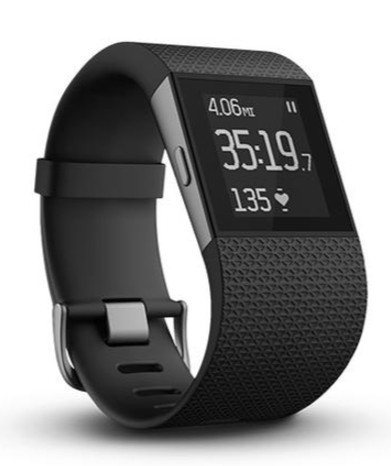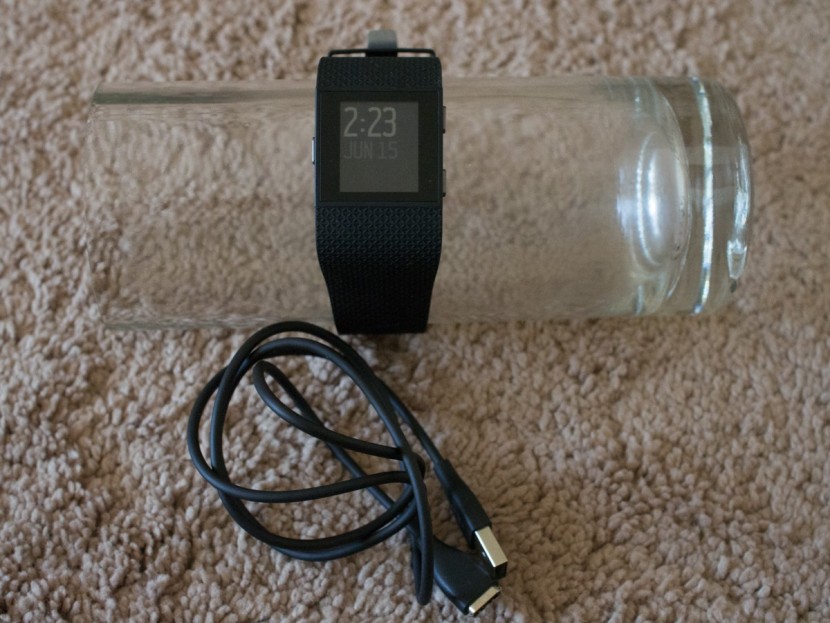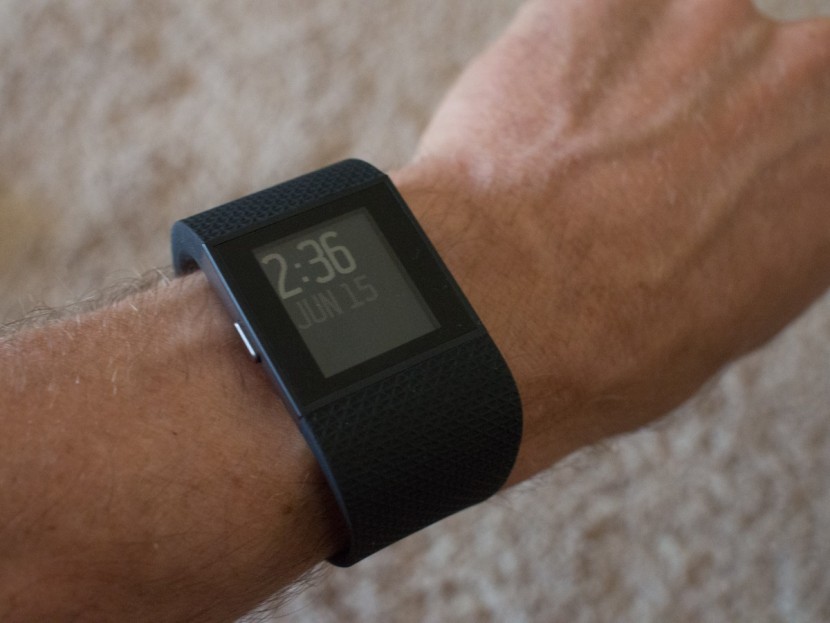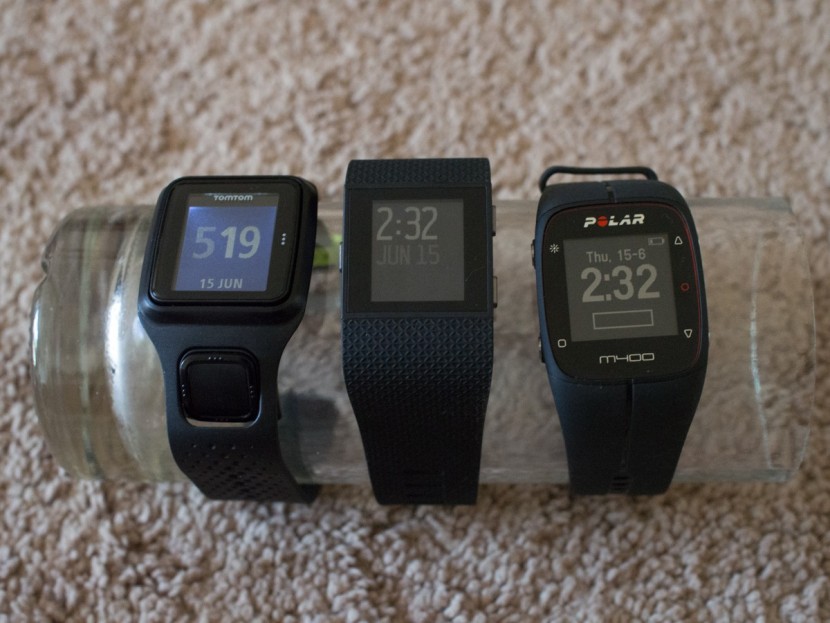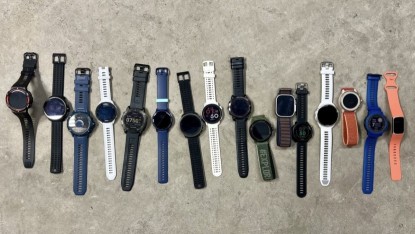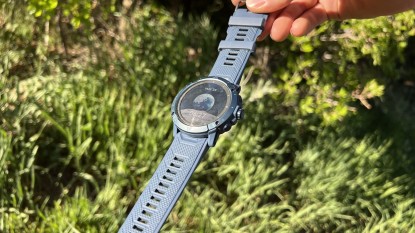Fitbit Surge Review
Our Verdict
Our Analysis and Test Results
Products evolve to join this category in a variety of ways. Companies grow and expand in many different directions. Fitbit came to the GPS watch category with their Surge full-function training watch from the past that began in the basic, step-counting “fitness tracker” category. In fact, “FitBit” has become somewhat synonymous with the movement-sensing step tracker. This Surge device is so much more than just a step counter, though it does that. It represents full-function daily activity and run-tracking technology, in a practical, sporty package. As is becoming more and more standard, the Surge adds basic smartwatch functionality to broaden the appeal further.
Ease of Use
Fitbit established its well-regarded reputation with simple step-counting electronics and a phone-app-based data management system that has served now to motivate millions of users and trillions of steps. Since their early devices, devices that just counted your steps, letting the phone app do all the processing and communication of that basic information, Fitbit Inc. has steadily added features and functions, without compromising the effectiveness and clarity of their information communication. The Surge is now a step counter that also has a screen for on-the-go data viewing and smartwatch function, an optical wrist-mounted heart rate sensor, and a GPS antenna and associated software for even more accurately measuring distances and speeds outdoors. All is communicated to your smartphone using the app you may already be familiar with from your basic FitBit. We emphasize simplicity in our review of the Fitbit because it is just that easy to use. The feature set is comprehensive, but the interface and usability remain clean and basic.
The Garmin devices, whether the award-winning Forerunner 935 or Forerunner 35 or the excellent-but-non-award winning VivoActive, are similarly easy to use. It took some time and work for this giant GPS manufacturer to adapt their user interface, but it is now similar to the Fitbit in all the right ways. Computer and phone giant Apple, with their Apple Nike+ brings an easy user interface and a fully comprehensive feature set to their product. The Fitbit is easier to use than the Apple, if only because there are far fewer options on the Fitbit.
Features
The Surge has what may prove to be exactly the right features for you. There are certainly some sensors and attributes that are omitted in the interest of cost, size, and efficiency, but the things the FitBit does are useful. As noted above, this contender counts steps and monitors your sleep, receives basic smartphone notifications, and uses a GPS sensor to track specific, intentional exercise sessions.
Other devices, notably our Editors' Choice Garmin Forerunner 935, its sibling the Fenix 5, and the Suunto Ambit 3 Peak, add even more features. In addition to what the Surge has, these watches have navigation functions, barometric altimeter sensors, temperature gauges, and can be accessorized with external sensors. The Forerunner 935 and the Fenix 5 have wrist-mounted heart rate sensors while the Ambit3 does not. The Surge combines some of the best attributes of our Best Buy Garmin Forerunner 35 and the Garmin VivoActive. It has the smartwatch and GPS features of both, with the step count of the VivoActive and the heart rate sensor of the Forerunner 35.
Accuracy
We measured the accuracy of every GPS watch on an outdoor running track. We completed, with every product, multiple half mile tests. On a track, the actual distance is very clear. We could then easily compare the watch measured distance to the actual distance. The 5% average error of the Surge is a little greater than average. Only the Nixon Mission is less accurate, with an average error range of 7%. All the other tested products are more accurate than the Surge. Notably, close competitor Garmin Forerunner 35 only had a 2% error in our 2018 tests.
Ease of Set-Up
It is in ease of set up that Fitbit excels. In some ways, they set the standard for phone-app-linked wearable electronics. In a digital “quantified life,” Fitbit is ahead of the curve. You simply charge the device, download the app, and click through a few setup questions. With Fitbit leading the charge, other manufacturers have now “caught up” and offer similar ease of set up. Garmin, Suunto, and Apple have emulated this intuitive format. The Polar M400, Nixon Mission, and TomTom Runner all take longer to set up.
Battery Life
All Fitbit devices have aimed to last for about a week. As they add more features to subsequent generations of devices, the battery must get larger, but the recharge interval stays about the same. Our anecdotal testing of battery life supports the claim that the Surge will last about a week. The Garmin VivoActive battery lasts almost twice as long while the Apple Nike+ endures half the time of the Surge. In day-to-day use, plus a few hours per week of GPS tracked running outside, both the Surge and the Editor's Choice Garmin Forerunner 935 last about a week.
Portability
The Surge “body” is about average in bulk. One orders the Surge in one of a few different sizes, but the difference is only in the band. Size is the primary determinant of portability, but we also consider fashion here. Especially for these devices with step-count attributes and smartwatch functionality, daily wear style is valuable. If you can wear this in all social and work settings, as well as during activity, the value will increase. AWhile activity trackers are more common and less socially stigmatized, but the most popular models still look like normal watches. The Surge does not look like a normal watch. The wideband and squared profile are more athletic than fashionable in appearance. The Garmin Forerunner 35 is smaller and more normal looking. For everyday wear, the Garmin is more comfortable, fashionable. The Surge is similar in bulk and fashion to the Polar M400 and the TomTom Runner.
Best Applications
The Surge is perfect for someone who can and will wear this form factor in everyday settings and wants GPS tracking for occasional (weekly, or a little more) dedicated training sessions.
Value
This model was a contender for our Best Buy award. Only the TomTom Runner is less expensive, but the TomTom has no step counting, no smartwatch features, and no heart rate tracking. The Fitbit and Garmin Forerunner 35 are tied for second place, price-wise, but the Garmin has more robust data management for athletes. Since we are evaluating this category of products for athletes looking to track their athletic endeavors, Garmin's advantages in data management edge it ahead, earning it our Best Buy award. If we were evaluating for day-to-day activity tracking with only occasional dedicated training, the Fitbit would win the Best Buy.
Conclusion
For a large segment of the population, the Fitbit Surge will be just right. It has the functions many want. It has good battery life and an excellent user interface. However, it is a little bulky and overly practical in appearance. For daily use, it stands out a little too much. We'd prefer it looked more like a “normal” watch.


